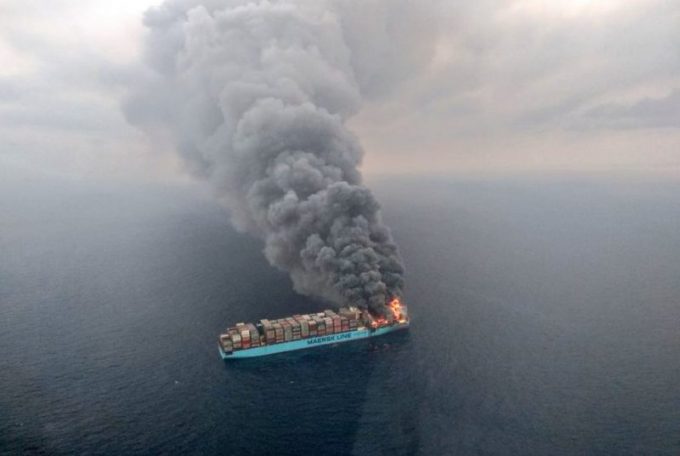Rough seas drive powerless MSC box ship aground on Canadian coast
An MSC containership ran aground in Canada on Saturday, after a loss of power in ...

The insurance industry is bracing itself for hundreds of millions of dollars of claims from the biggest container vessel casualty to date – but some shippers will not have been insured.
A Maersk spokesman told The Loadstar today no decision had yet been reached on the port of destination for the fire-damaged 15,262 teu Maersk Honam.
However, according to AIS signals received from one of the salvage tugs in attendance, the still-smouldering vessel is under tow, heading slowly in a NNE direction, which could ...
Asia-USEC shippers to lose 42% capacity in a surge of blanked sailings
USTR fees will lead to 'complete destabilisation' of container shipping alliances
New USTR port fees threaten shipping and global supply chains, says Cosco
Outlook for container shipping 'more uncertain now than at the onset of Covid'
Transpac container service closures mount
DHL Express suspends non-de minimis B2C parcels to US consumers
Zim ordered to pay Samsung $3.7m for 'wrongful' D&D charges
Uncertainty over US tariffs sparks interest in bonded warehouses for imports

Comment on this article
betty
April 02, 2018 at 12:48 amInterested in follow-up on this article.
Ingvar Bergman
April 11, 2018 at 3:34 pmI am unclear of who are the Customers and who are the Carriers in the Maersk Honam incident. Major players in the liner trade are nowadays the large NVOCCs who together may account for 75/80 pct of the volume shipped in certain trades, one being FE/EU.
The NVOs could be both – Customers to Maersk and poised to hand in average bonds and Carriers to the ultimate Cargo Owners, since they have given their own B/L and thereby considered Carriers with liability equal to a ‘genuine’ Carrier. And as such – as I see it – will have to collect a/bonds from the Cargo Owners.
A question: Will MSC be considered a Customer to Maersk or a ‘Co-Owner’ ?
Another question: Apart from the large NVOs, there are many small NVOs (mainly Asian) many among them are most certainly uninsured. Their Customers may be sufficient insured but that could prove useless if the uninsured NVO cannot provide deposit and denied delivery. How do such unlucky cargo owners proceed to take delivery?